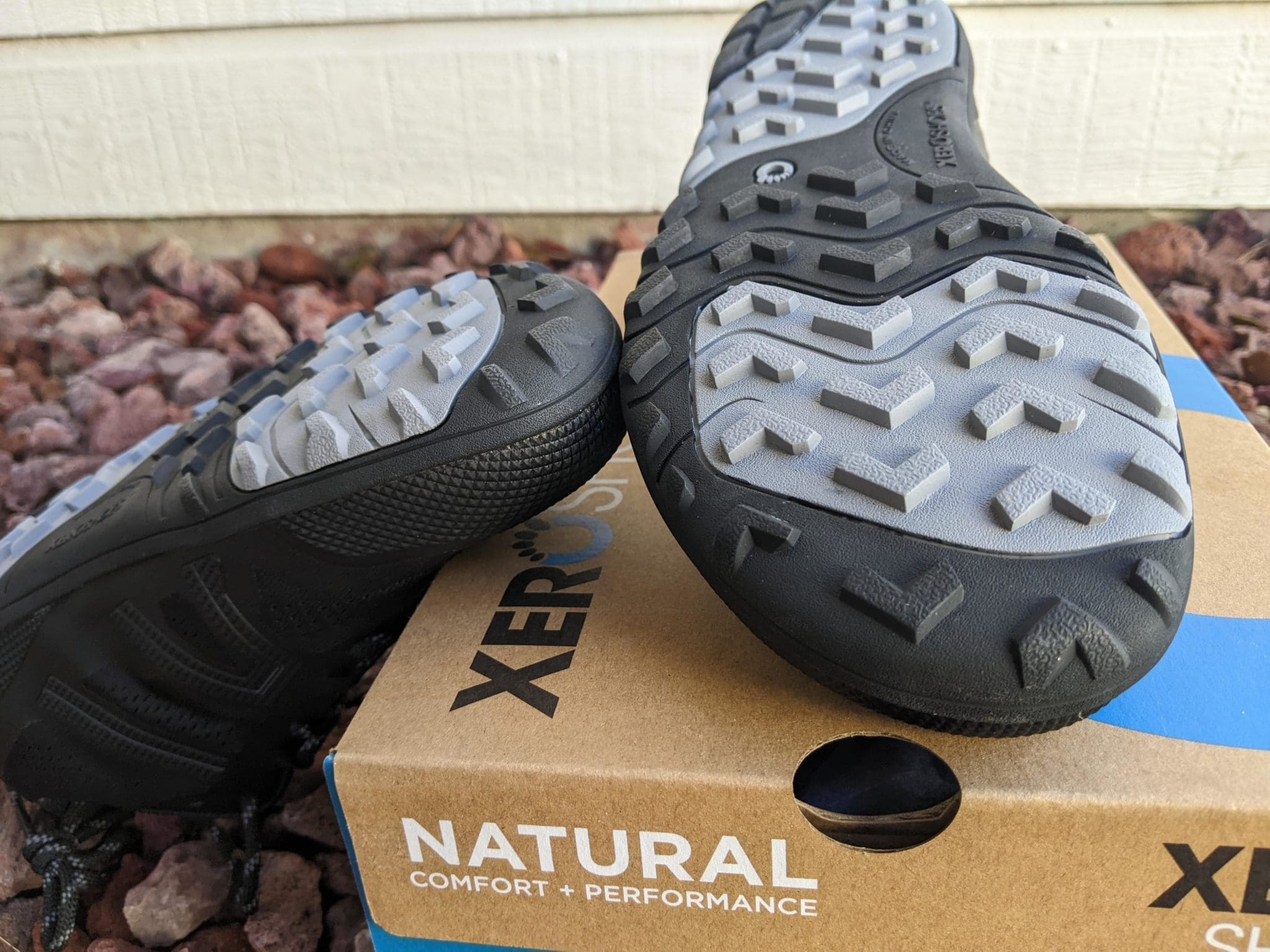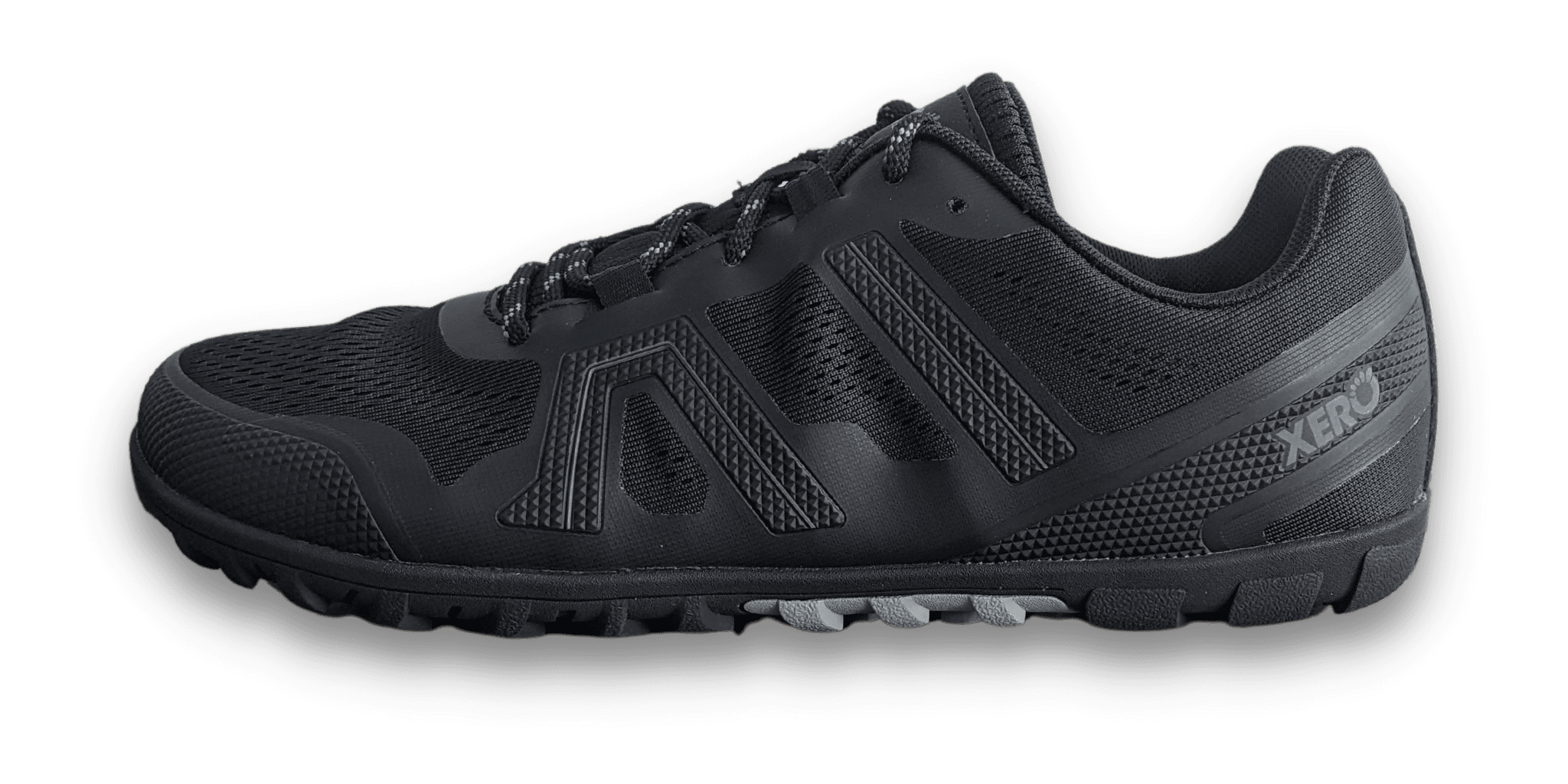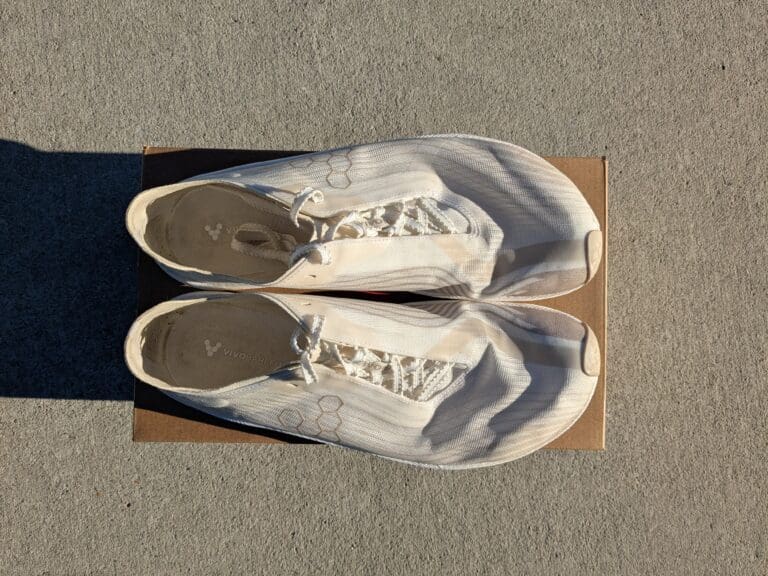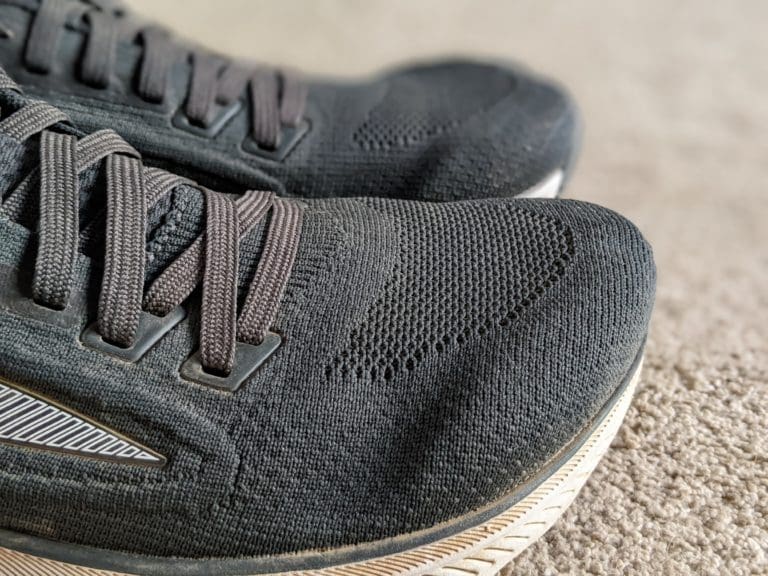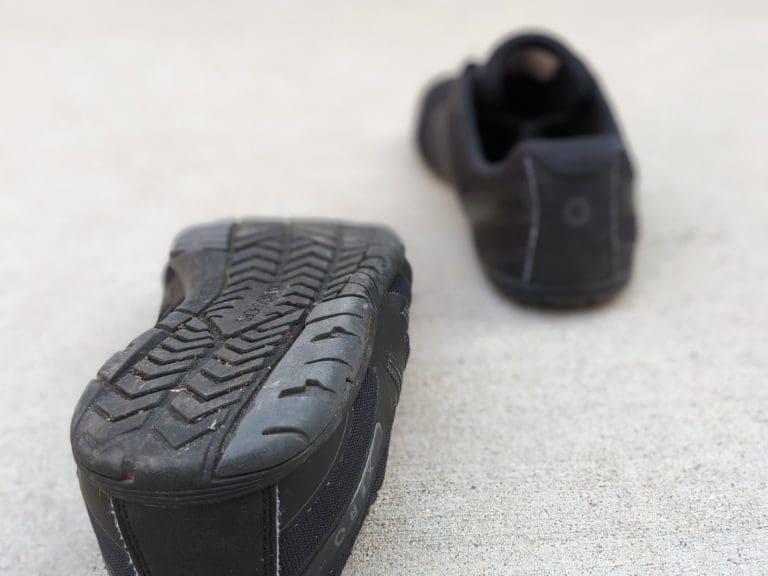There are not many barefoot trail shoes on the market, and that’s because it’s a tough niche to get right.
Too minimal, and the sharp rocks will likely cut your run short.
Too maximal, and everyone will complain that there’s no ground feel.
But Xero Shoes are a brand that decided they could get it right, and two times over at that!
In this review, I’ll look at the fundamentals of the Xero Shoes Mesa Trail II and the Xero Shoes Terraflex II, highlight the key differences, and explain the different situations in which these shoes excel.
For more in-depth reviews of both shoes, check out the full reviews in the links below.
Affiliate Disclosure: By clicking through the links on this page and purchasing the products, you’ll be helping me out. This is done because I receive a kickback from the sellers at no extra cost to you! Thank you so much for supporting us!
Mesa Trail II
Type: Trail
Width: Average
Stack height: ~5 mm + 3.5mm lugs + 3.5mm removable insole
Weight: 8.2oz / 232g
Best trail shoe for ground feel and protection. Read the full Review
Terraflex II
Type: Trail
Width: Average
Stack height: 6.5 mm outsole rubber 3.5 mm removable insole
Weight: 8.9 oz/ 252 g
A durable but heavier trail offer. Likely better for walking. Read the full Review
The fit of both shoes is relatively similar and familiar to anyone that’s worn Xero Shoes before. Both the Mesa Trail II and the Terraflex II fit true to size and suit anyone looking for a shoe with depth.
Moderately wide toe boxes for both. The structured toe boxes on both models are nice and deep and will accommodate 80% of you out there. Now if you’re a super toe splayer with a fan-shaped foot, you are likely better off looking at different brands because Xero Shoes are not the widest on the market.
Which minimal running shoe is for you?
Take a quick 5-question quiz to identify the perfect minimal running shoe for your feet! You'll get both road and trail options based on your answers!
The material differences set both of these shoes apart in performance but also fit. Because the Mesa Trail II is aimed at the performance-based lightweight market, the thin materials mold perfectly around the foot, feeling like a protective second skin. Whereas the Terraflex II is made with durability and protection in mind, and the thick overlays contribute to a stiffer, more secure fit. Meaning there’s less freedom in barefoot movement.
Lockdown is near perfect for the Mesa Trail II, and the Terraflex II isn’t too far behind. Because the materials around the ankle cuff are relatively flexible on both shoes, it’s possible to lock your feet tight without worrying about slippage. This benefit is further enhanced by the Mesa Trails, where the super flexible materials hug the foot like a sock.
If you want the authentic barefoot feel, the Mesa Trails II’s are for you. With only a few millimeters of stack height difference, you’d expect the feel in both shoes to be similar. But that couldn’t be further from the truth. The Mesa Trail II perfectly balances protection and barefoot flexibility, which works in various conditions.

Need more protection? Opt for the Terraflex II. The Terraflex II adds more stack height under the foot to further protect you from the elements on the trail. On top of that, the sturdy toe box and durable material around the shoe protect you from scuffs and scrapes.
To transition from traditional shoes, the Terraflex II is a good option. With slightly less flex and a little more stack height, the Terraflex II performs more like a conventional shoe. Although I’d still suggest slowly transitioning into barefoot shoes, the Terraflex could ease the transition on your sore feet!
In the past, I used to toute the Terraflex II as taking home the trophy. But after busting through my pair in less than 600km and then taking a pair of Mesa Trail’s past 1200km (and still going), the advice will be different!
The outsoles on both shoes are rugged, but I don’t recommend spending any time on the road with them. It likely goes without saying, but these shoes are not made for the road. You want to preserve the aggressive sole when you hit the mud! Both will likely see similar wear rates as the rubber materials are similar.
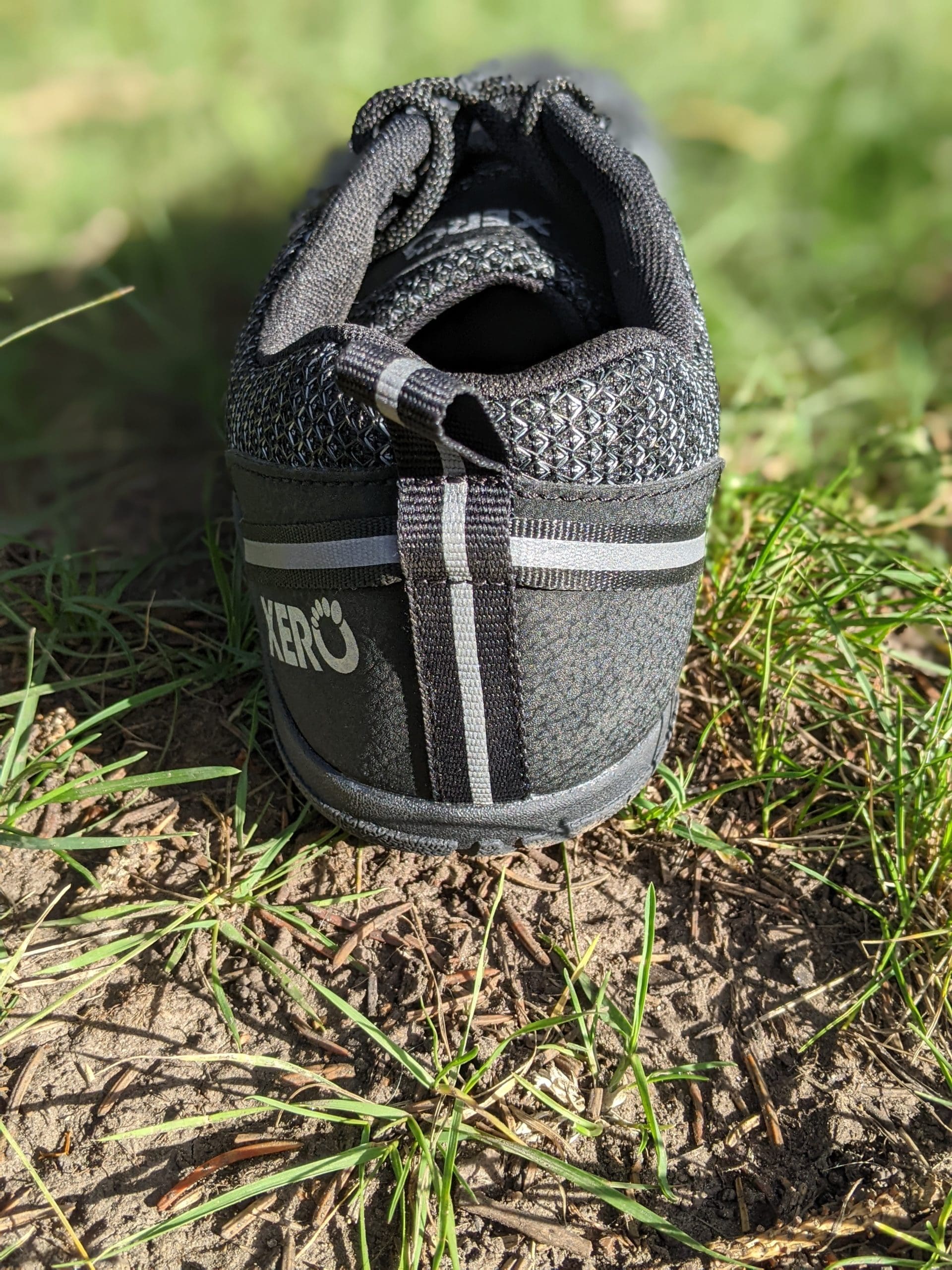
The Mesa Trail II redesign is a good update from the original. The original Mesa Trail was minimal and fun but just too minimal for its own good. I ended up busting out the side of the first pair too quickly, although the 2nd pair lasted much better. Now, with the redesign, overlays in all the high-wear areas ensure the shoes will go the distance.
Watch for the Terraflex II insoles and midsole packing out. I took the Terraflex shoes out on the Colorado Trail with me, where I moved for 30 miles daily. Obviously, they would break down fast in those conditions, but I found the insole was causing huge issues with sore spots. I’d suggest swapping these out soon after purchase. On top of that, the minimal foam in the Terraflex II was packed out, and the ridge of the seam was exposed. This would not have been an issue if the insoles were of better quality.
In the end, the decision is easy.
If you’re walking more on technical or rough trails, choose the Xero Shoes Terraflex II.
If you want a true and super fun barefoot experience, choose the Xero Shoe Mesa Trail II.
For me, the flexibility of the Mesa Trail II wins out on every run.
Mesa Trail II
Type: Trail
Width: Average
Stack height: ~5 mm + 3.5mm lugs + 3.5mm removable insole
Weight: 8.2oz / 232g
Best trail shoe for ground feel and protection. Read the full Review
Terraflex II
Type: Trail
Width: Average
Stack height: 6.5 mm outsole rubber 3.5 mm removable insole
Weight: 8.9 oz/ 252 g
A durable but heavier trail offer. Likely better for walking. Read the full Review
